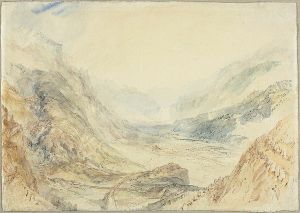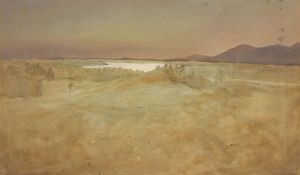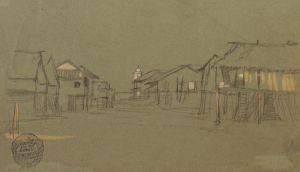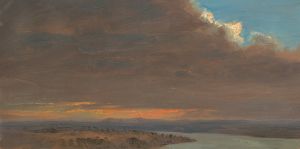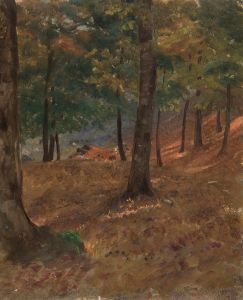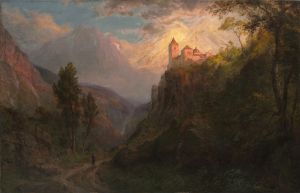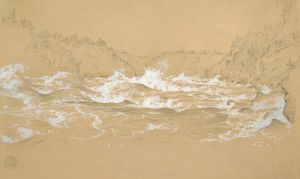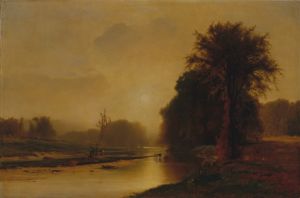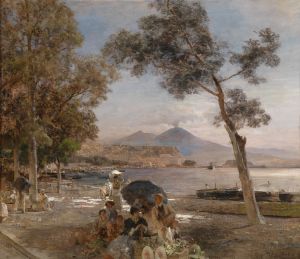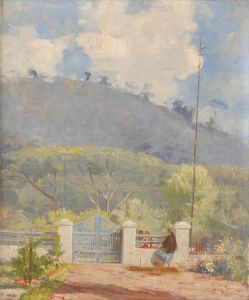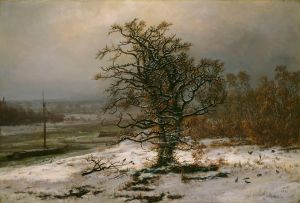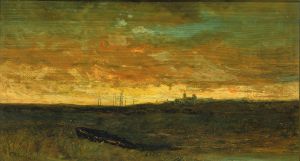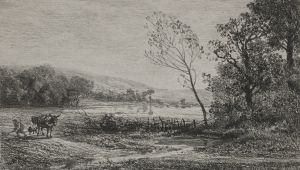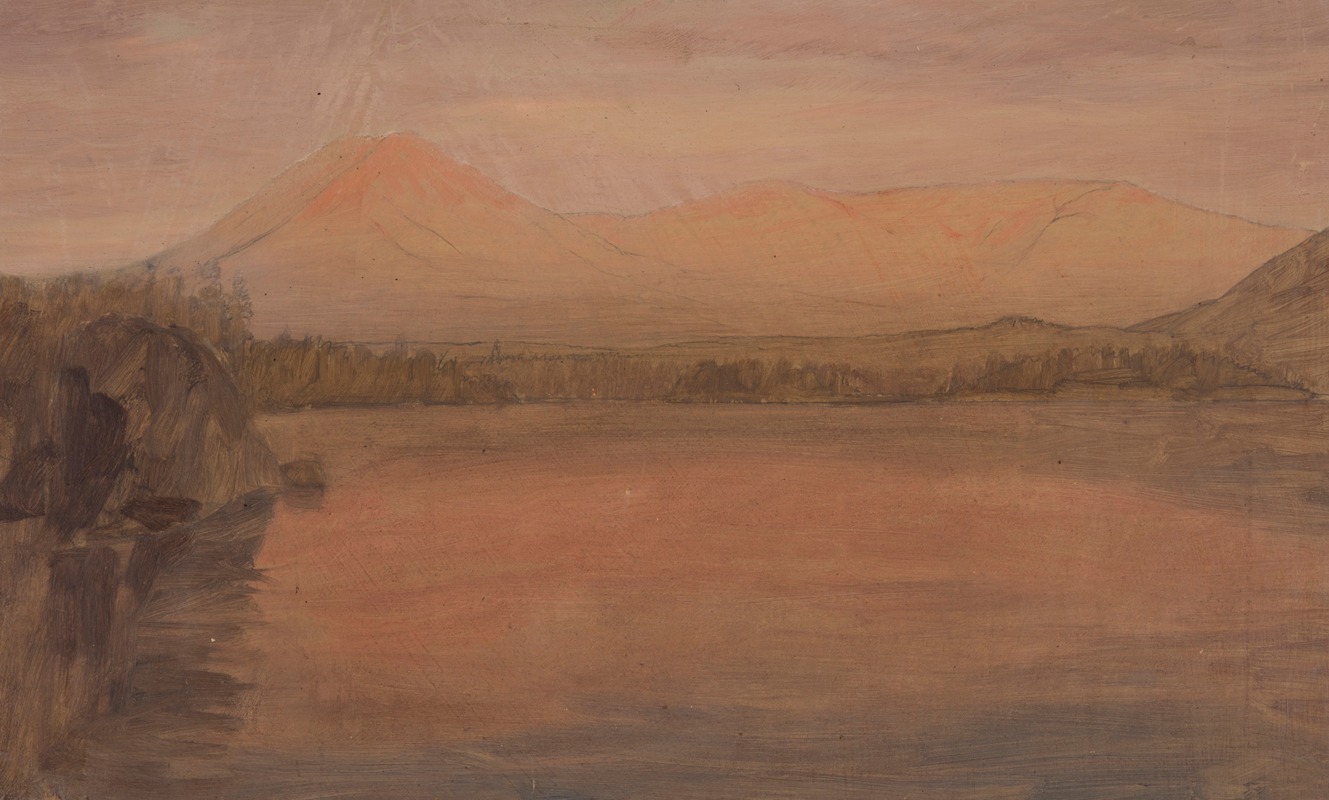
Mts. Katahdin and Turner from Lake Katahdin
A hand-painted replica of Frederic Edwin Church’s masterpiece Mts. Katahdin and Turner from Lake Katahdin, meticulously crafted by professional artists to capture the true essence of the original. Each piece is created with museum-quality canvas and rare mineral pigments, carefully painted by experienced artists with delicate brushstrokes and rich, layered colors to perfectly recreate the texture of the original artwork. Unlike machine-printed reproductions, this hand-painted version brings the painting to life, infused with the artist’s emotions and skill in every stroke. Whether for personal collection or home decoration, it instantly elevates the artistic atmosphere of any space.
"Mts. Katahdin and Turner from Lake Katahdin" is a painting by the renowned American landscape artist Frederic Edwin Church. Church, a central figure in the Hudson River School, is celebrated for his detailed and dramatic landscapes that often depict the sublime beauty of the American wilderness. This particular work exemplifies Church's fascination with the natural world and his ability to capture its grandeur on canvas.
Frederic Edwin Church was born on May 4, 1826, in Hartford, Connecticut. He studied under Thomas Cole, the founder of the Hudson River School, and quickly developed his own style characterized by meticulous attention to detail and a keen interest in light and atmosphere. Church's travels throughout North and South America provided him with a wealth of inspiration, and he became known for his ability to depict diverse landscapes with both scientific accuracy and artistic flair.
The painting "Mts. Katahdin and Turner from Lake Katahdin" showcases Mount Katahdin, the highest peak in the state of Maine, and a significant landmark in the region. Mount Katahdin is part of Baxter State Park and is known for its rugged terrain and natural beauty. Church's depiction of this landscape reflects his interest in the American wilderness and his desire to convey its majesty and power.
In this work, Church employs his signature style, characterized by precise brushwork and a vibrant palette, to capture the interplay of light and shadow across the mountains and lake. The composition is carefully balanced, with the mountains rising majestically in the background and the serene waters of Lake Katahdin in the foreground. Church's use of light is particularly noteworthy, as it imbues the scene with a sense of tranquility and timelessness.
Church's paintings often reflect the 19th-century American ethos of exploration and discovery, and "Mts. Katahdin and Turner from Lake Katahdin" is no exception. During this period, there was a growing interest in the natural landscapes of the United States, fueled by westward expansion and a burgeoning sense of national identity. Artists like Church played a crucial role in shaping the public's perception of these landscapes, highlighting their beauty and significance.
The painting is also an example of Church's ability to blend realism with romanticism. While his works are grounded in careful observation and detail, they also evoke a sense of wonder and awe, inviting viewers to contemplate the vastness and beauty of the natural world. This duality is a hallmark of Church's work and contributes to his enduring legacy as one of America's foremost landscape painters.
"Mts. Katahdin and Turner from Lake Katahdin" remains an important piece within Church's oeuvre, reflecting both his technical skill and his deep appreciation for the American landscape. It serves as a testament to Church's ability to capture the essence of a place and to convey its beauty to audiences both in his time and today. Through this painting, Church invites viewers to experience the majesty of Mount Katahdin and to appreciate the natural wonders that define the American landscape.





